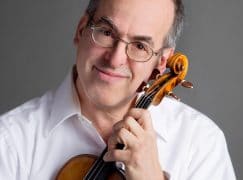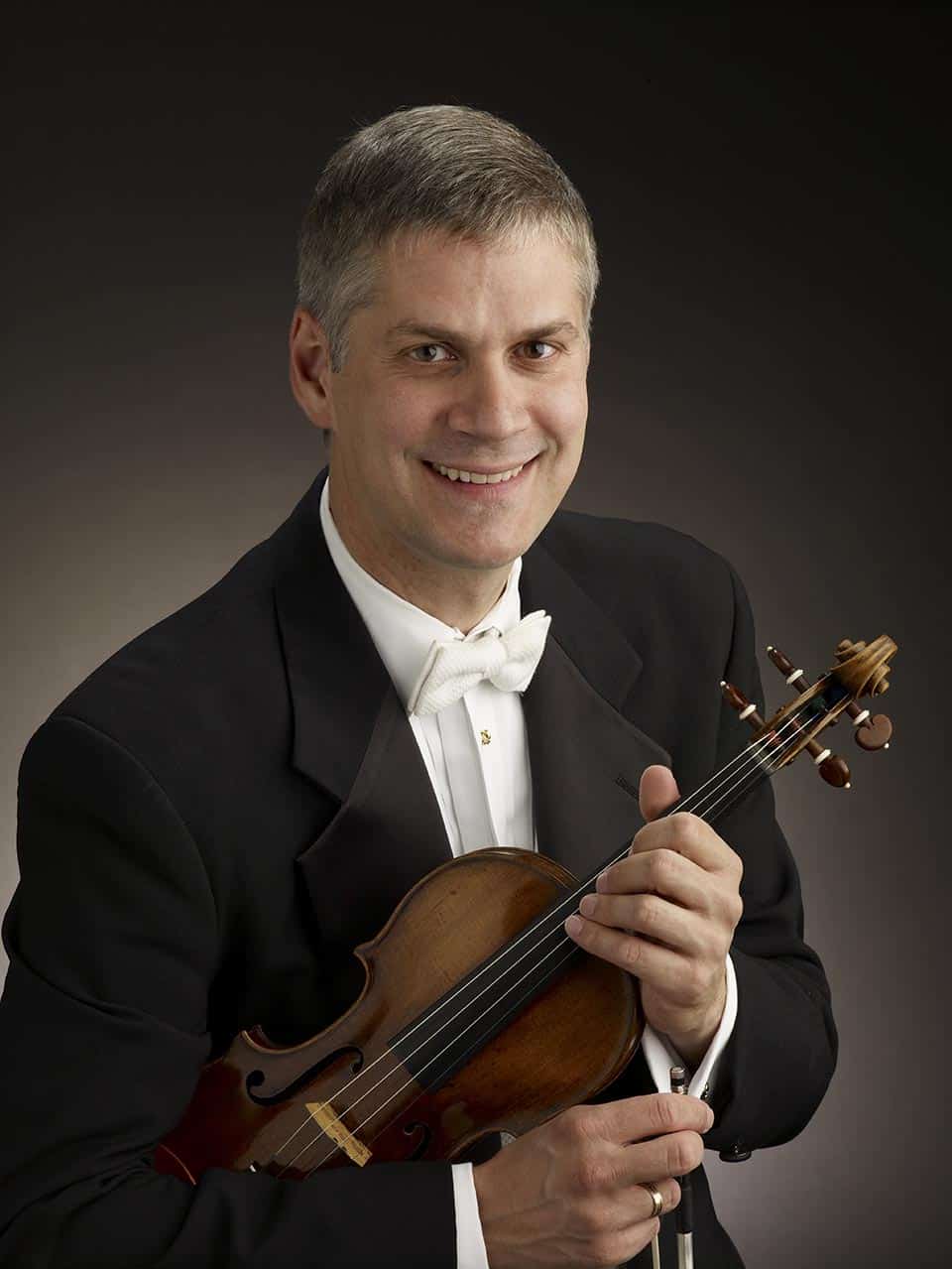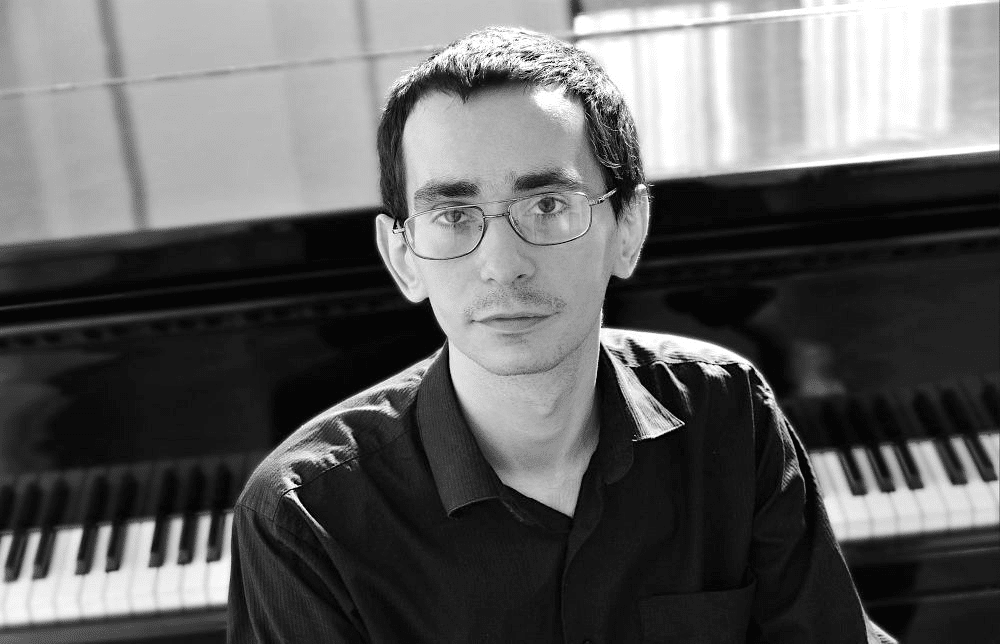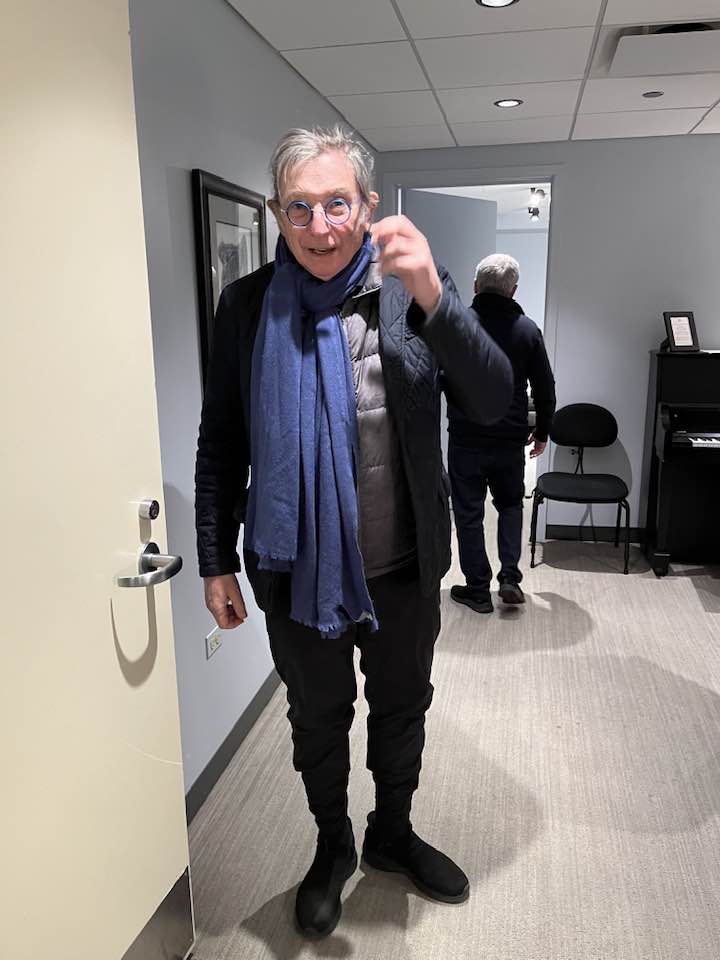What’s the point of second violins?
mainPaul Arnold of the Philadelphia Orchestra says: ‘As a middle voice player, it’s a tremendous insight into how the music is constructed—you’re very inside of the architecture of the music. I have played first violin at length in this orchestra, and I somehow find that when I play second violin I know the piece differently.’
Your thoughts?

Full interview here.





Second violin can be a rewarding experience. But if you’re in an orchestra that plays lots of pops concerts, it’s meager musical sustenance for years on end. I left my full-time ensemble because of it.
All string sections in a symphony orchestra form, together, the main texture of the music, they encapsulate the total sound. The 1st violins are often more clearly heard because managing the top voice, but the other strings can’t be missed. In many pieces of the repertoire, the 1st violins are seated left, the 2nd right, as to make their different lines audible, underlining their equal importance. There is no string group that is ‘less important’ than another, they all count. Also the violas, always the subject of bad jokes, are important: often they form the ‘meat’ in the sound and connect upper and lower voices in the total sound.
“In many pieces of the repertoire, the 1st violins are seated left, the 2nd right, as to make their different lines audible, underlining their equal importance.”
That’s usually the conductor’s choice, not the composer’s (unless the composer has specified a specific seating arrangement). The conductor of my orchestra experimented with this for a few years, but the acoustics of our stage are such that the 1sts and 2nds couldn’t hear each other, and only the first stands could see each other. I think he liked the audiovisual separation of the two lines, but that added clarity also exposed the poor ensemble (which was not the players’ fault). If the 1sts and 2nds sit in a big group together, then the back-benchers of both sections can hear & see each other, and ensemble is better and easier.
Interesting….. but it is the score which suggests the seating of 1st and 2nd violins. In Mahler for instance, the parts often suggest stereo seating, especially in, as an example, the 1st mvt of nr IX where the groups ‘answer’ each other and have at places different dynamics while doubling the same melodic line. This effect would be lost if the groups would sit next to each other. There are hundreds of examples in scores of the repertoire where stereo seating is obviously meant, with an interplay between the two groups. As Norman del Mar says in his ‘Anatomy of the Orchestra’: “A particularly interesting and subtle use of interplay between the two violin sections, and which goes for very little when they are seated together, is the famous overlapping passage at the beginning of the finale of Tchaikovsky’s Symphonie Pathétique” (P. 53, with music example).
Agree that the last mvt of Tchaik 6 would benefit from “stereo” seating (for those of you who don’t know, the theme you hear is not actually played by any section: the 1st and 2nds play alternate notes and the ear constructs the melody). That’s the most extreme example I know of, but yes, there are lots of pieces/ parts of pieces where opposing violins would add to the aural experience. It seems to require the right onstage acoustics to make it practicable, though. (As I said, we tried it for a few years and were never able to do it well. The acoustics out in the audience are gorgeous; but sitting in the center of the orchestra I usually can’t hear the basses unless they play fff, and can’t hear the 1st violins if the 2nds are playing — same was true when the cellos sat in that spot for awhile.)
That seems all a problem of the hall acoustics. The same problem seems to bother the Concertgebouw: players cannot trust their ears and have to entirely steer on the conductor. That seems very unpleasant, players should be able to hear each other as to make good ensemble and to adjust tuning if necessary while performing.
Given their level of playing, the Concertgebouw musicians do an extraordinary job of compensating for the poor hall acoustics.
With regards to the politics of an orchestra, the 2nd violins are actually the most powerful members of the orchestra. It’s very difficult for a conductor, or anyone, to retaliate against them musically. Hence they can speak their minds at orch. meetings, to the press, you name it. What’s a conductor going to do? Single out someone in the middle of the 2nd violins for artistic criticism? It’s possible, but way more difficult than going after a Principal.
2nd violins are in a most enviable position professionally. Whereas Principals are constantly under the direct artistic scrutiny of the Music Director, audiences and other members of the orchestra, 2nds can fly under the radar a little more easily.
Any Principal who speaks out always runs the risk of artistic criticism.
As far as professional longevity goes, you don’t find as many 2nd violinists being asked to retire before their time. They stand to collect their full pensions, avoid conflict with mgt. over being forced to retire, and so on.
It seems that very few 2nd violins ever figure this out. They don’t realize the advantage they have professionally. Most of them just sit there like meek lambs, following the crowd, never speaking out, while Principals sit in envy of their potential ability to speak their minds with little risk of retaliation.
They can have fun. Enjoy tours. Not get so nervous at concerts.Write scathing books & blogs about conductors.
If I am ever reincarnated to play again in an orchestra, I would take a 2nd violin position any day.
It appears, Observer, as though you think that the “Principle” is the only first violinist. That’s not the system. That, plus comments you’ve made in other threads on this blog, makes me doubt that you ever played in an orchestra.
If you’re going to criticise a post, it might be best to make sure you know the difference between principal and principle.
Just a typo, brother.
Scotty, what is your point? Every section, inc. second violins has a Principal. If that has to be explained to you you don’t know much about how orchs work. And pretty much anyone who’s ever played in an orch. knows the diff. between “Principal” and “principle”.
Your comments are out of place. You don’t have a clue what you are talking about. Furthermore, even if I didn’t play in an orch. (which I have, as a Principal non-string player in a full time prof. orch. for probably longer than you have been alive, “Brother”.) it makes no difference in this conversation.
My opinion is that second violin is a very desireable position politically. Take it or leave it.
So are you saying that by “principal” you meant “first violins.” Or are you saying that being buried in the 2nd violin section is safer than being a principal of any of the sections? If that’s the case, isn’t being mid-row in the first violins safer than being one of the two oboists?
As in this thread: https://slippedisc.com/2017/05/will-my-orchestra-be-allowed-into-america/, I find your logic hard to follow.
Scotty, that has nothing to do with this topic. I just got sick of arguing with you on that thread and didn’t respond anymore. I made my point. Nothing more to say.
And here as well. Look, you are confused. “Principal” refers to the “First Chair” (is that term more easily understandable to you?) of each section.
Ist violins are lst violins. Generally their Principal is the Concertmaster. Second violins are second violins. Their Principal is the Principal Second Violin. Every other section in the orchestra has a Principal player, from Principal Double Bass to Principal Percussion to Principal Trumpet. These are the musicians who play the solos, who are responsible for the section, who answer directly to the conductor. The people who play in their sections are generally called “tuttis” or section players. There are what, about l5 Principal players in any orch. and the rest are tuttis.
OK, now that I have spelled that out for you I hope you understand that yes, what I am saying is that it is a lot safer to be playing in the middle of a second violin section than to be playing as, say, Principal Trumpet.
Please don’t be jumping in to criticise when you apparently are not too clear on how an orch. works. Now you know. Now let it go.
In some countries the violins are divided into “principal” and “second” violin sections. Maybe that’s what Observer meant.
Thanks, Bruce, but it’s not. Every section in the orchestra has a Principal and sometimes a Co-Principal or Asst. Principal. Everyone else is generally called a tutti.
Without getting into too much detail, the Principal of the first violins is generally the Concertmaster. But sometimes there are variations on that. The 2nd violins also have a Principal. “Principal Second Violin” is the title. Then there is usually an “Asst. Principal Second Violin”.
Maybe I am missing something here, but I am not getting why this should have to be explained in comments of a blog read mostly by classical music afficionados and professionals.
Cue Britten’s Young Person’s Guide to the Orchestra at this point. If you’ve ever even attended a classical music concert, you see these titles in the program. Or glance over any prof. orch’s website, it’s there as well. It’s no mystery.
People are confused (or they think you are) because you seem to be dividing violins into two groups: principals and seconds.
No, I am dividing the orch. into Principals and Tuttis, with Tutti Second Violin being the best. But even Principal Second Violin is a pretty good place to be. You’re right, I should have made that clearer.
Observer, Bruce is right about my source of confusion. I still can’t tell if you meant to divide violins into two groups, principals and seconds, or if you were saying that a member of the second violin section could hide better than a principal of other sections. I mentioned the other thread because there I had been similarly confused by your convoluted writing there.
Scotty, in what universe should an orchestral player be expected to write coherently? Or even think coherently, for that matter. I do my job well, just can’t write about it too clearly.
Interesting.
I always thought it’s so unfair that string players are payed the same salary as wind players when string players are sawing away at 100 miles a minute for 2 hours straight, and the wind player toots a few solo notes and get a bow at the end.
Talking about equal work for equal pay.
On the other hand, a string player can always get leave from a concert because it makes no difference if they’re gone. The orchestra normally won’t even hire a sub to replace them. Wind players get denied leave requests all the time.
And as a string player, you never really have to learn your part since you can usually count on being covered for by your section mates if you aren’t lucky enough to be drowned out by the brass.
Also: trombone players should be paid only $15 for performances of Beethoven #5. Ditto for piccolo players for #9. Tuba players should never earn more than $5 for a performance of any piece except possibly Petrushka, which might be worth $10.
Hee hee, this is fun! 😀
You’re thinking of Beethoven 5 on that picc part. The last movement was the lst time both tbone and picc were used symphonically. They tacet the rest of the piece.
Beethoven 9 is also has a picc tacet most of the piece, but when you finally play, it’s so solistic and difficult (it’s audition rep) that the picc player should actually get more for it.
Winds also have the financial advantage on doubling. We all know the words to the famous Sugar Plum Fairy bass clarinet solo in Nutcracker – “twenty five percent!”
Whichever. Mr. String Player doesn’t care if it’s an audition-rep solo or not. In any case, the picc player doesn’t usually get a bow at the end of either piece – unlike Tchaik 4, where they really do sit around for half an hour, “toot a few solo notes,” and take a bow at the end (if your heart hasn’t given out).
Beethoven 5 is also the first symphony (that I know of) with a contrabassoon part. Tacet the first three movements, the contrabassoonist encounters in the fourth movement one of the more challenging technical parts in the contra literature. It’s often found on auditions. It is said that Beethoven often had contra players double the string bass parts, but this one is the first written-out part in his symphonies.
Then there is Beethoven 9: tacet the first three movements, then abject terror with an insanely challenging part. What did contemporary contrabassoon player think of it? I don’t know.
Missa Solemnis is, if anything, even harder than the 9th. I once went to Carnegie to hear the Mass live, just to analyze the performance by the contrabassoonist. (Of course I also enjoyed the performance of the whole work.)
Most orchestras aren’t sadistic enough to put the 9th and Missa Solemnis on the audition list. 🙂
One advantage of being tacet: more opportunity to listen to the music, from within the ensemble.
But also the rests in an orchestral part are part of the job. A wrong entry because of faulty counting destroys the effect of the whole. Think of the trumpets coming-in after 100 bars with a high entry in fortissimo – that requires a nervous condition almost as valuable as the actual playing. For the piccolo in Beet IX – if he/she is hired specially for the job and not doubled by a flute – he/she should be paid the full amount for the patience of the 3 movements before entry.
I once had an interesting talk with a tomato farmer who had been percussionist in his younger years, until he hit, in a concert with Mahler VI last mvt, the box with such a big hammer that the contraption was completely in splinters. But worse, his counting had gotten astray and he banged two bars too early after a nerve-racking searching in his part. He left the profession for a calmer life.
I must say I have often wondered about the stress levels of some of the orchestral players I have observed … intense careful counting and furrowed brow before blasting in on brass or hitting the high notes on flute …. as you note, some eventually may choose a less stressful occupation!
What’s the difference between a first violin and a second violin? About $10,000 a year.
Not actually true, but funny.
My happiest wind band memories are playing 3rd or 4th trumpet as a kid. Mr Arnold’s comments apply: On “first” you lead and you are exposed. On 2nd, 3rd or 4th you might play in unison with the first or in parallel or harmonies or octaves, every time becoming part of a completely different texture and having to adapt your playing in many ways. But in the next bar you might be doubling the unison french horns or adding an additional part to the trombone group. Sometimes you might even play against the others and have to judge how important your contribution is and how clearly it should stand out. It’s true, you learn so much more about the fabric of the composition, and you have to listen to everything around you much more than on the 1st chair where you would have to lead and decide.
Actually, I think my entire interest in composition, orchestration and conducting can be traced back to playing 2nd, 3rd and 4th parts. If I had started out on the 1st part, I might never have become interested in the fabric of the whole.
He’s a tremendous musician with Philadelphia. God bless him.
Thanks for the information